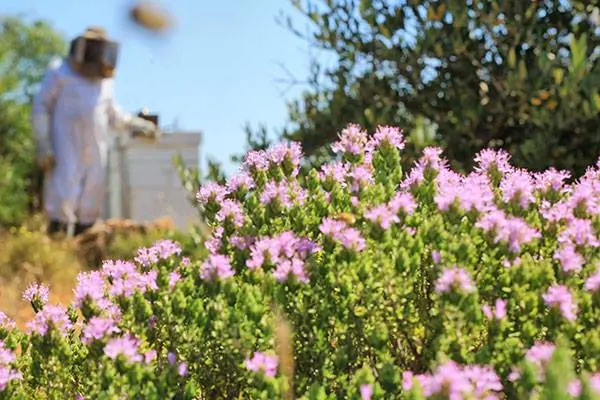
Sagħtar, also known as Za'atar, is a versatile spice mix or herb blend used in Mediterranean and Middle Eastern cuisine. Made from a mix of dried thyme, sesame seeds, sumac, and more, it's perfect for seasoning dishes like roast chicken, hummus, and flatbread. Look for a quality za'atar that contains natural ingredients like wild thyme and sumac for the best flavour.
It’s either a herb or a spice mix. However, It’s certainly no coincidence that here in Malta the name for wild Thyme is Sagħtar. Thyme is one of the myriad ingredients that make up the magical concoction they call Za’atar.
Pronounced zah-tar, this aromatic spice blend combines toasted sesame seeds, dried thyme, marjoram, and sumac, the lemony spice from the Levant. The blend incorporates various herby flavours in a very fragrant, olive-green to a charcoal colour mixture that is as delicious as it is useful.
In the Garigue of the Maltese islands, there is an abundance of the wonderfully fragrant Sagħtar. When in flower, the Maltese black bee clamours for it, and the resulting honey is truly nectar from the gods, but I digress.

Malta isn’t the only area that has the Garigue. It is, however, one of the principal habitats of the protected wild thyme plant on the archipelago.
It’s a familiar environment around the Mediterranean, a rocky, limestone ridden scrubland, close enough to the coast, so the sea breeze drops the temperature slightly. Creating just the right microclimate for this crop to flourish.
In Maltese, a garigue is called a xagħri. In Greece, they call it a phrygana, in Spain its called tomillares, in Israel, it’s known as batha and in Italy, macchia. So really the ubiquitous nature of wild thyme should be no surprise.
The spice mix that’s currently doing the rounds of all the fashionable kitchens is, Za’atar, (pronounced Zaah-tar). It is as fluid a concoction as is your favourite Pasta recipe. It will vary from village to village, from kitchen to kitchen in its make up.
It’s created around the wild hyssop plant (a close relative to oregano, only a little more earthy). It is commonly harvested in Middle Eastern countries like Jordan, Lebanon, Israel, Iraq, Palestine, Syria, and parts of southern Turkey in the springtime and then sundried on rooftops for sale.

The spice mix is then made by milling the dried leaves and adding in lots of sumac, marjoram, sesame seeds [ toasted], thyme, and salt. In Middle Eastern home cooking, za’atar is used as a table condiment and often served on flatbread.
There are no official standards for the recipe or the quality of ingredients which sometimes can lead to rather dubious concoctions being sold. The important thing to look for is an aromatic, bright herby, yet woody, citrus fragrance.
You can find za’atar in the spice section of any good Mediterranean or Middle Eastern food store. I would suggest you look at the label carefully. Look for za’atar that contains wild thyme (or hyssop) and sumac (never citric acid).
Make sure the ingredients are natural, and nothing else is included. It should have a good texture, i.e. not powdered and be more on the herby, green coloured side.
As for its usage, it’s probably my ‘go-to’ Spice mix. I season my roast Chicken with it, Sprinkle it on my homemade Hummus, or Biggilla. I love it on my fried eggs, and I am without doubt overly generous with it on my flatbread… Even a simple Gozitan, tomato salad is elevated to new heights with this wonderfully aromatic and nutty condiment…

At Med.kitchen, our passion lies in crafting exceptional culinary experiences through our online platform. We specialise in sharing a wealth of knowledge via articles, recipes, courses, and online mentoring, aiming to inspire both novice and seasoned chefs alike. Our focus has shifted from private dining to being an online source of gastronomic inspiration, allowing you to explore and refine your culinary skills from the comfort of your home..